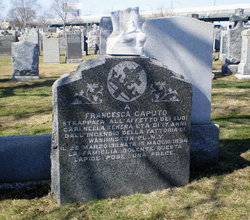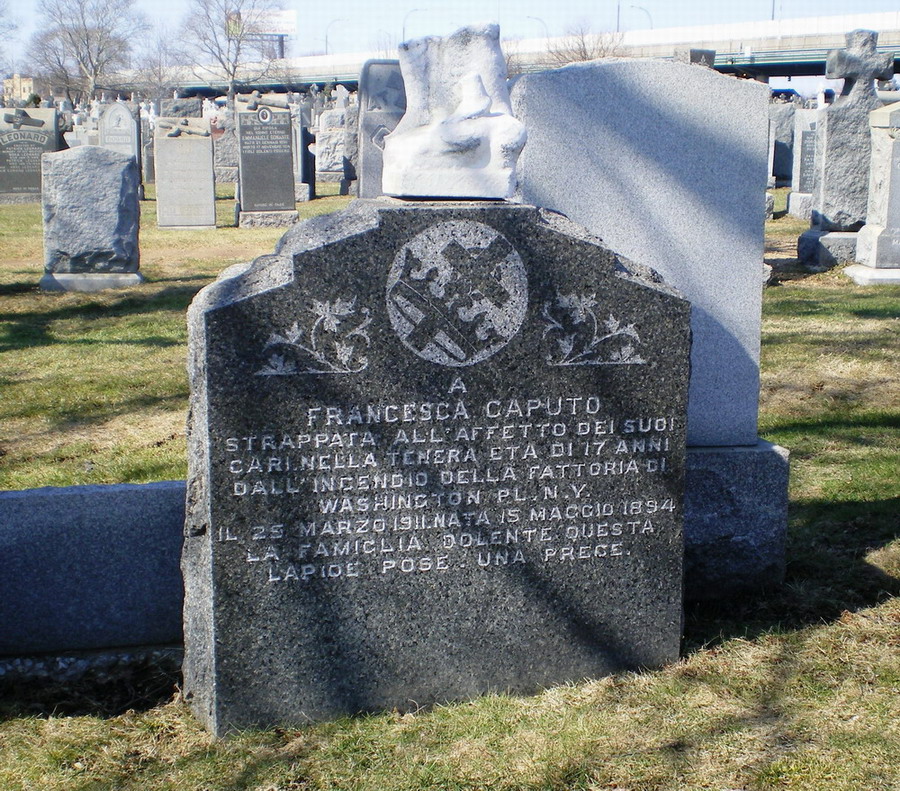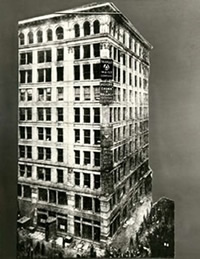The company made women's blouses, known as "waists" or "shirtwaists", and it's workers were mostly recent immigrant German, Italian and European Jewish girls, some as young as 13 years old. The working conditions were far from safe. The girls worked 14 hour shifts among heaps of flammable bolts of fabric, scraps of which piled up in bins, baskets and on the floor around them; tissue paper patterns hung from racks above their worktables. The workrooms were lit by open flame gas lamps and the cutters, mostly men, were allowed to smoke as they worked. Brought on by a New York garment workers strike in 1910, many had joined the fledgling International Ladies' Garment Workers' Union. At the conclusion of the strike, most companies had signed agreements with the union improving working conditions. The Triangle Company, however, refused to sign and was under no obligation to abide by established safety rules.
On March 25, 1911, around 4:30pm, fire broke out on the 8th floor. Most on that floor and the executives on the 10th floor were able to escape, but workers on the 9th floor, who had not been alerted to the fire, found themselves trapped. Of the four 9th floor exits, the elevators made as many trips as they could but were commandeered by 8th floor workers and then stopped working altogether, one stairwell door was soon blocked by fire and smoke, the other stairwell door had been locked (although denied by the owners in their subsequent trial, it was common practice to lock factory workers in to prevent them from stealing) and the only fire escape collapsed under the weight of the escaping workers. Many died from being overcome by the smoke and flames quickly filling the building, some leapt down the elevator shafts, but 62 workers realized there was no other means of escape and jumped from the windows to the pavement 9 stories below. Or worse, they were pushed toward the open windows by the panicked crowd and had no choice. The fire department responded quickly, but their hoses' spray could not reach the top floors and ladders of the time were unable to reach above the 6th floor. By the time the fire was extinguished, 141 people had lost their lives. In the next few days, 5 more would die from their injuries.
From her documented injuries and cause of death, Francesca was most likely one of those who jumped. Her body was identified in the early hours of March 26 by Salvatore Natone whose relationship to Francesca is unknown.
Public outrage following the tragedy paved the way for a flood of legislation to improve factory safety and hastened the growth and clout of the International Ladies' Garment Workers' Union. A bystander who witnessed the workers jumping from the windows was inspired to a life of public service fighting for the rights of factory workers; Frances Perkins went on to become the first woman appointed to a Presidential Cabinet position as Franklin Roosevelt's Secretary of Labor. The Triangle Shirtwaist Fire was most deadly workplace disaster in New York City until the attack on the World Trade Center in 2001.
The company made women's blouses, known as "waists" or "shirtwaists", and it's workers were mostly recent immigrant German, Italian and European Jewish girls, some as young as 13 years old. The working conditions were far from safe. The girls worked 14 hour shifts among heaps of flammable bolts of fabric, scraps of which piled up in bins, baskets and on the floor around them; tissue paper patterns hung from racks above their worktables. The workrooms were lit by open flame gas lamps and the cutters, mostly men, were allowed to smoke as they worked. Brought on by a New York garment workers strike in 1910, many had joined the fledgling International Ladies' Garment Workers' Union. At the conclusion of the strike, most companies had signed agreements with the union improving working conditions. The Triangle Company, however, refused to sign and was under no obligation to abide by established safety rules.
On March 25, 1911, around 4:30pm, fire broke out on the 8th floor. Most on that floor and the executives on the 10th floor were able to escape, but workers on the 9th floor, who had not been alerted to the fire, found themselves trapped. Of the four 9th floor exits, the elevators made as many trips as they could but were commandeered by 8th floor workers and then stopped working altogether, one stairwell door was soon blocked by fire and smoke, the other stairwell door had been locked (although denied by the owners in their subsequent trial, it was common practice to lock factory workers in to prevent them from stealing) and the only fire escape collapsed under the weight of the escaping workers. Many died from being overcome by the smoke and flames quickly filling the building, some leapt down the elevator shafts, but 62 workers realized there was no other means of escape and jumped from the windows to the pavement 9 stories below. Or worse, they were pushed toward the open windows by the panicked crowd and had no choice. The fire department responded quickly, but their hoses' spray could not reach the top floors and ladders of the time were unable to reach above the 6th floor. By the time the fire was extinguished, 141 people had lost their lives. In the next few days, 5 more would die from their injuries.
From her documented injuries and cause of death, Francesca was most likely one of those who jumped. Her body was identified in the early hours of March 26 by Salvatore Natone whose relationship to Francesca is unknown.
Public outrage following the tragedy paved the way for a flood of legislation to improve factory safety and hastened the growth and clout of the International Ladies' Garment Workers' Union. A bystander who witnessed the workers jumping from the windows was inspired to a life of public service fighting for the rights of factory workers; Frances Perkins went on to become the first woman appointed to a Presidential Cabinet position as Franklin Roosevelt's Secretary of Labor. The Triangle Shirtwaist Fire was most deadly workplace disaster in New York City until the attack on the World Trade Center in 2001.
Family Members
Sponsored by Ancestry
Advertisement
Explore more
Sponsored by Ancestry
Advertisement






